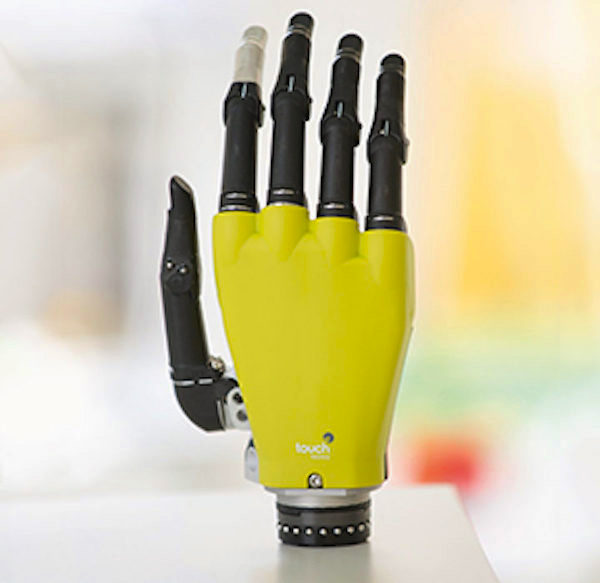Solar-Powered Graphene Skin Reproduces Sense of Touch
Researchers at the University of Glasgow have created a solar-powered graphene skin that can simulate the sense of touch.
Graphene finds yet another use as a coating for photovoltaic cells, adding self-powering capabilities to electronic "skin" for prosthetics.
Flexible electronics has very large potential to help develop new prosthetic and robotic devices as well as in the electronic industry. Recently, there have been many new innovations in products that can help restore senses. There are various different types of implants, ranging from optical to cochlear—but none these have been able to replicate the sense of touch. This is due to the difficulty inherent in creating sensitive and accurate pressure measurements.
Graphene and Solar Power Join Forces
In 2015, a team of researchers at the University of Glasgow developed an electronic skin covering for a prosthetic hand that was capable of making pressure measurements using graphene, a hexagonally formed sheet of carbon. Arranged in a single, atom-thick sheet, graphene is accepted to be the world’s thinnest and strongest material. After its discovery in 2004, the material has been making strides in just about every electronic market due to its natural flexibility and its properties as a superconductor.

Image courtesy of Wearable Tech + Digital Health + NeuroTech Boston.
Now, another team of researchers at the University of Glasgow has begun to target another niche of the super material. Not only can graphene act as a conductor, but it happens to be 98% transparent, allowing light to pass through and charge photovoltaic cells underneath graphene-coated devices.
Solar Powering Prosthetic Limbs
The team was able to create a prototype that could generate enough energy to power itself. The technology only requires 20 nanowatts of energy per square centimeter, which is very easy to generate even with low-quality solar cells.
“The other next step for us is to further develop the power-generation technology which underpins this research and use it to power the motors which drive the prosthetic hand itself. This could allow the creation of an entirely energy-autonomous prosthetic limb,” said Dr. Raviya Dahiya, the group's leader. “We’ve already made some encouraging progress in this direction and we’re looking forward to presenting those results soon.”
The research team ran tests on a prosthetic hand with a layer of the electronic skin in certain areas. When the skin was turned on, the hand was capable of grabbing soft objects with restraint.
Currently, the prototype is only capable of harnessing energy and not storing it, while future research will be vested in energy storage. With the low price of graphene and silicon, the entire hand only cost $350 to produce while a typical battery operated prosthetic hands cost can range into tens of thousands of dollars. If equipped with different types of sensors, the material could possibly see applications in things such as movement and biosensing.
The team’s research paper, Energy Autonomous Flexible and Transparent Tactile Skin, is published in Advanced Functional Materials.
Competing Research
Almost simultaneously, research was published at the Indian Institute of Technology at Hyderabad, India detailing advances in the self-regenerative properties of graphene at room temperature without any external stimulus. The graphene was put under a load of stress until it fractured, and when the stress was relieved the material would begin to heal itself as long as the fracture was within .5 nanometers. Even graphene with preexisting flaws such as obtuse cracks and gaps was able to self-heal.
If this regenerative property can be used in combination with other graphene layered devices such as the electronic skin, we can expect to see rapid advancement in graphene-based technologies.







